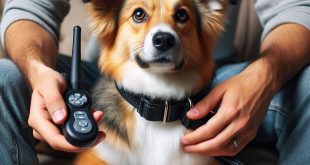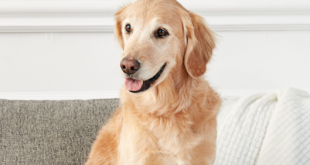As one of the most beloved furry companions in the world, dogs bring incomparable joy to our lives. Whether you’re a first-time pooch parent or a seasoned dog owner, there are certain essential commands that your furry friend should be trained to obey. From sit and stay to come and heel, these basic dog commands not only help you control your four-legged buddy but also ensure their safety and promote good behaviour. In this article, we’ll explore the paw-some basics of essential dog commands that every dog owner should know and teach their furry companions. So, grab your pup’s favourite treats, and let’s get started!
Table of Contents
1. Sit, Stay, and Roll Over: The Basics of Training Your Four-Legged Friend
Training your four-legged friend can be an exciting and rewarding experience. However, it can be daunting to know where to start. Fortunately, there are some basic commands that every dog should learn, including sit, stay, and roll over.
To teach your dog to sit, begin by holding a treat close to their nose and moving your hand upwards. As their head follows the treat, their bottom will naturally lower. Once they are in the sitting position, say “sit” in a firm voice and reward them with the treat. Practice this command regularly until your dog masters it.
To teach your dog to stay, command them to sit, then stand in front of them with your hand outstretched in a stop motion. Say “stay” and take a few steps back. If your dog stays in place, reward them with praise and a treat. Gradually increase the distance between you and your dog, continuing to reinforce the command.
Finally, teaching your dog to roll over involves a bit more patience and persistence. Begin by commanding them to lie down. Hold a treat close to their nose and move it towards their shoulder, encouraging them to roll onto their side. Say “roll over” and gently guide their body until they are lying on their back. Reward them with praise and a treat. Practice this command regularly, gradually releasing your guidance until your dog can complete the action independently.
Training your dog takes time and effort, but it can strengthen the bond between you and your furry friend. These basic commands are just the beginning, but they lay the foundation for more advanced training techniques. Keep practicing, and don’t forget to shower your pup with plenty of love and affection along the way.
2. From Fetch to Heel: Essential Dog Commands Every Pup Should Master
Training your furry friend is one of the best things you can do for them. It not only helps you communicate better with your dog but also makes them happy, safe, and well-behaved. As a dog parent, one of the most important things you can teach your pup is essential commands.
The fetch command is a favorite among many dogs. Who doesn’t love chasing after a ball or frisbee? However, teaching your dog “heel” is equally important. It is a fundamental command that helps your dog walk safely and comfortably beside you. Using the “heel” command, your dog will be able to follow you while walking, jogging, or running, without pulling on the leash. It is a must-have command for every dog and an essential tool for enjoying outdoor activities.
Another critical command to teach your dog is “come.” It’s not just for playing catch or reuniting with your dog; it can be a life-saving command. If your dog ever gets loose or wanders off, a well-trained “come” command can help you get their attention and bring them back to safety.
In conclusion, fetch may be fun, but “heel” and “come” are the essential commands every dog should master. These commands can help keep them safe and well-behaved in any situation. So, go ahead and train your furry friend – they’ll thank you in their own waggy-tailed way.
3. Good Boy! Teaching Positive Reinforcement Techniques to Praise and Train Your Dog
Positive reinforcement is one of the most effective methods to train your furry best friend. By rewarding good behavior with a treat or praise, you can teach your dog commands and prevent unwanted behaviors.
To start implementing positive reinforcement, you should identify what your dog enjoys most – whether it’s a game of fetch, a special treat, or praise from you. Whenever your dog performs a command correctly, use this positive reward to reinforce the behavior and encourage him to repeat the action.
Another crucial aspect of positive reinforcement is timing. You should reward your dog immediately after he performs the desired behavior so that he can associate the action with the reward. Consistency is also key; you should reward your dog every time he performs the behavior correctly. If you fail to praise your dog for good behavior, he may not understand what he’s doing right or wrong, and it could take longer to train him.
With patience, consistency, and positive reinforcement, you can successfully train your dog and strengthen the bond between you two. Remember to always praise your good boy or girl and be ready with treats or toys to encourage and motivate good behavior.
4. Command Central: How to Optimize Your Training Plan for Maximum Success
In order to optimize your training plan and achieve maximum success, it’s essential to establish a command central. Here are a few tips to ensure that your training plan is successful:
1. Establish a schedule: Set aside specific times to work on your training plan and stick to it. This will help you develop consistency and keep you motivated.
2. Use technology: There are a variety of apps and tools that can help you track your progress and stay on top of your training. Take advantage of these resources to ensure that you stay on track.
3. Set goals: Establish specific, measurable goals that align with your overall training plan. This will help you stay focused and motivated.
4. Monitor your progress: Regularly evaluate your progress and adjust your training plan as needed. This will help you stay on track and continue to improve.
By establishing a command central and implementing these tips, you can optimize your training plan and achieve maximum success.
5. Building a Better Bond: The Importance of Consistency and Patience in Dog Training
One of the most important aspects of building a strong bond between you and your dog is consistency in training. Dogs thrive on routine and predictability, and they are far more likely to respond positively to commands and cues when they know what to expect. Consistency requires patience, as you will need to reinforce the same behaviors over and over again to establish good habits.
To maintain consistency in training, it’s important to establish clear boundaries and expectations for your dog. Use consistent verbal cues and hand signals for each command, and be sure to reward good behavior consistently with treats, praise, and affection. Consistency also means avoiding confusing your dog with mixed messages or conflicting commands. Be firm but fair in your training approach, and your dog will learn to trust and respect you as their leader.
Patience is another critical component in building a strong bond with your dog. Training takes time and repetition, and it’s important to remember that not all dogs learn at the same pace. Be patient with your dog as you work through challenges and setbacks, and never punish them for not learning quickly enough. Instead, focus on positive reinforcement and celebrate each small success along the way. With consistency and patience, you’ll build a stronger, happier bond with your furry best friend.
Whether your pup is a tiny chihuahua or a giant Great Dane, mastering these essential dog commands is an important part of every canine’s life. By integrating them into your pup’s life, you are sure to have a happier, healthier, and much more paw-some bond!
 Treat For Dog – Brain Training for Dogs, Dog Training & Obedience Discover Treat For Dog and get your pup on the path to smarter, happier, and healthier living with brain training for dogs.
Treat For Dog – Brain Training for Dogs, Dog Training & Obedience Discover Treat For Dog and get your pup on the path to smarter, happier, and healthier living with brain training for dogs.




